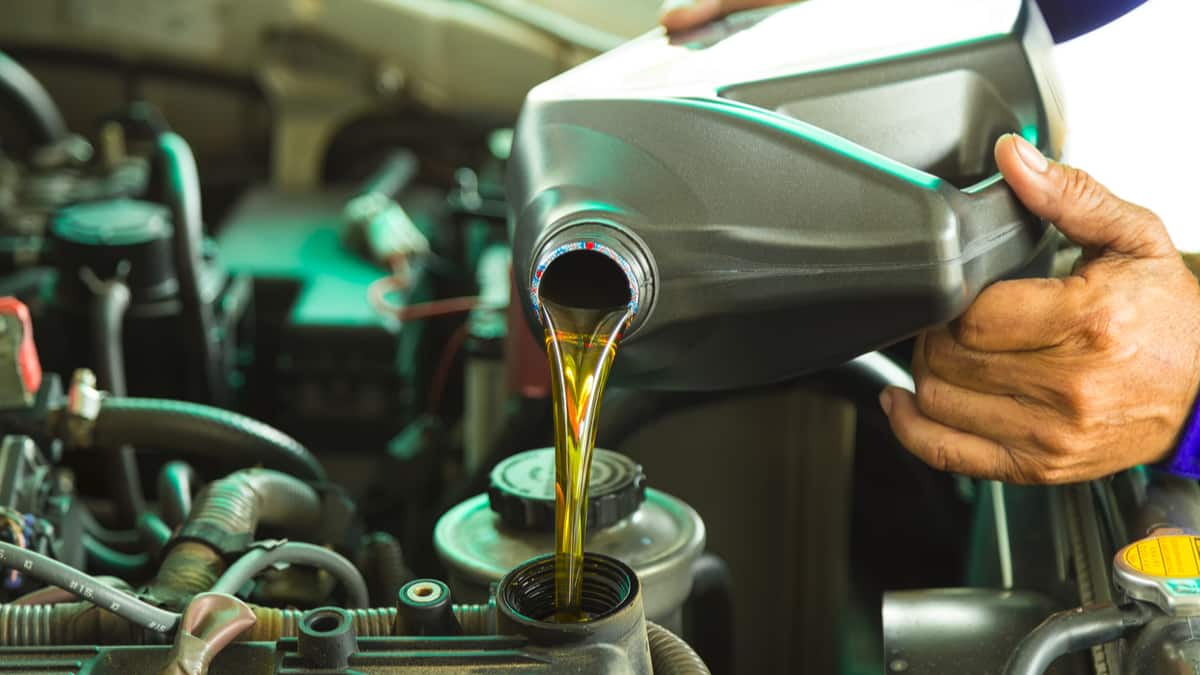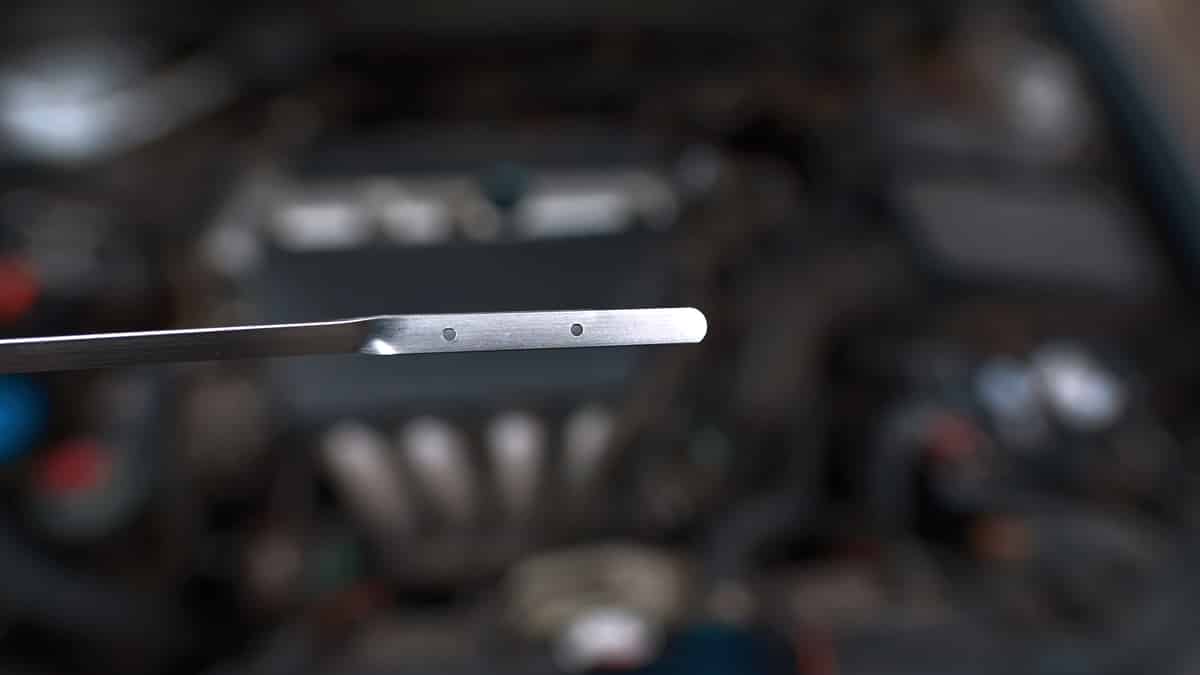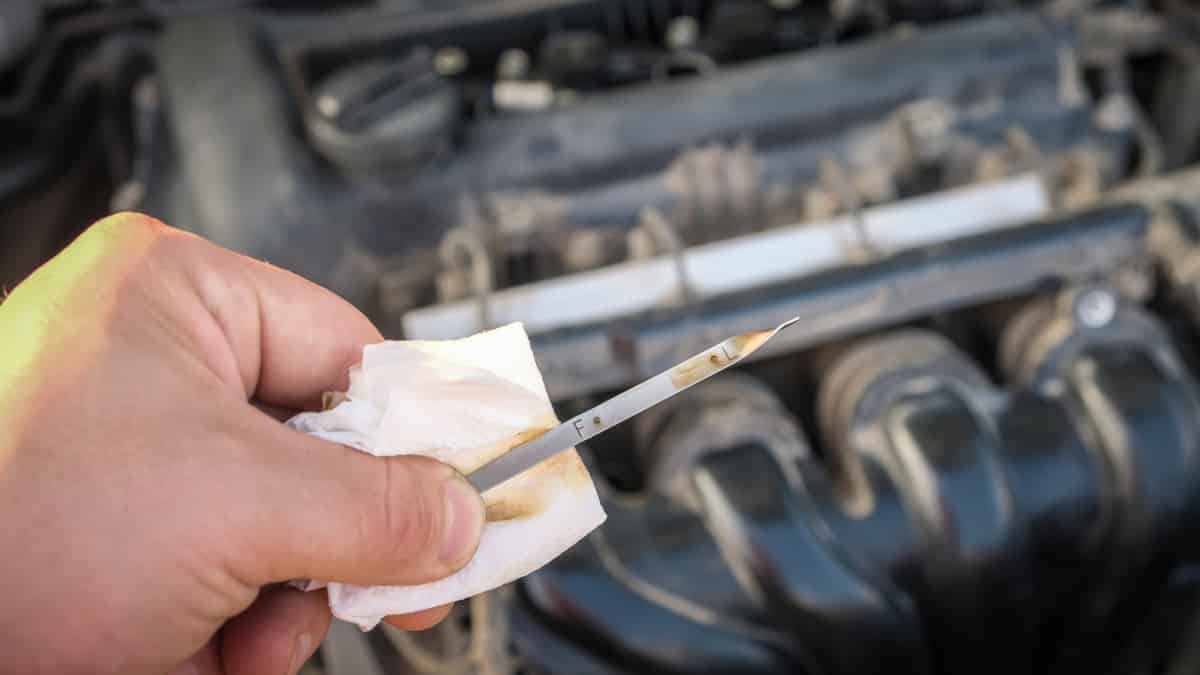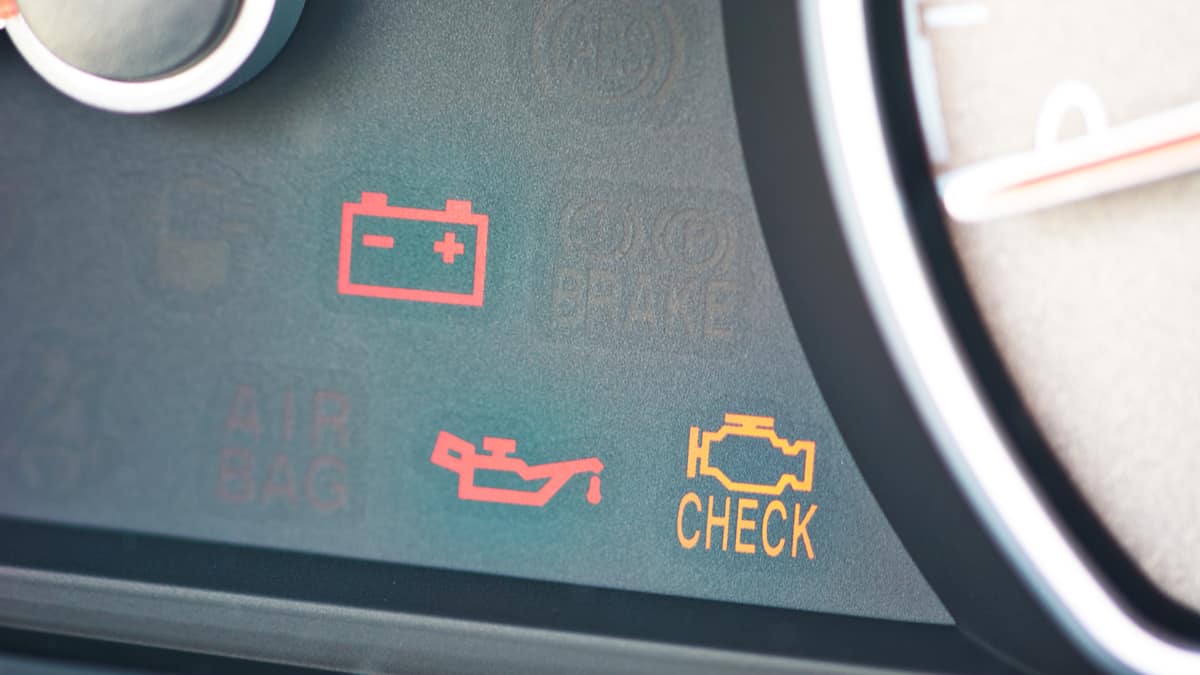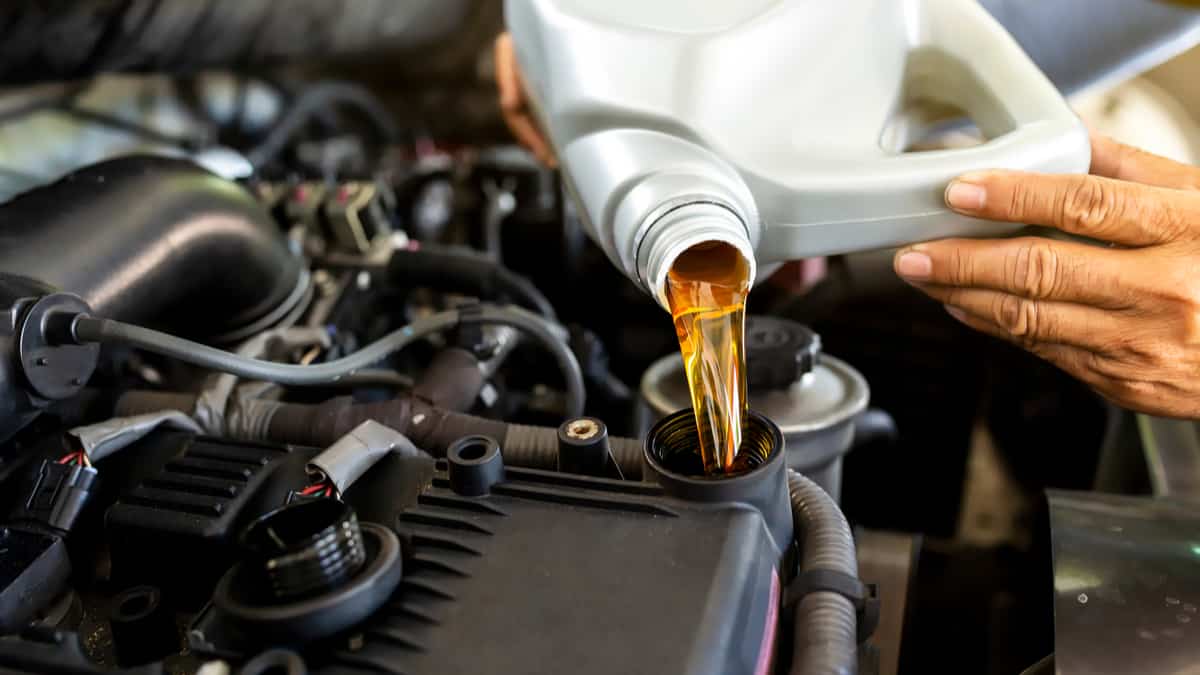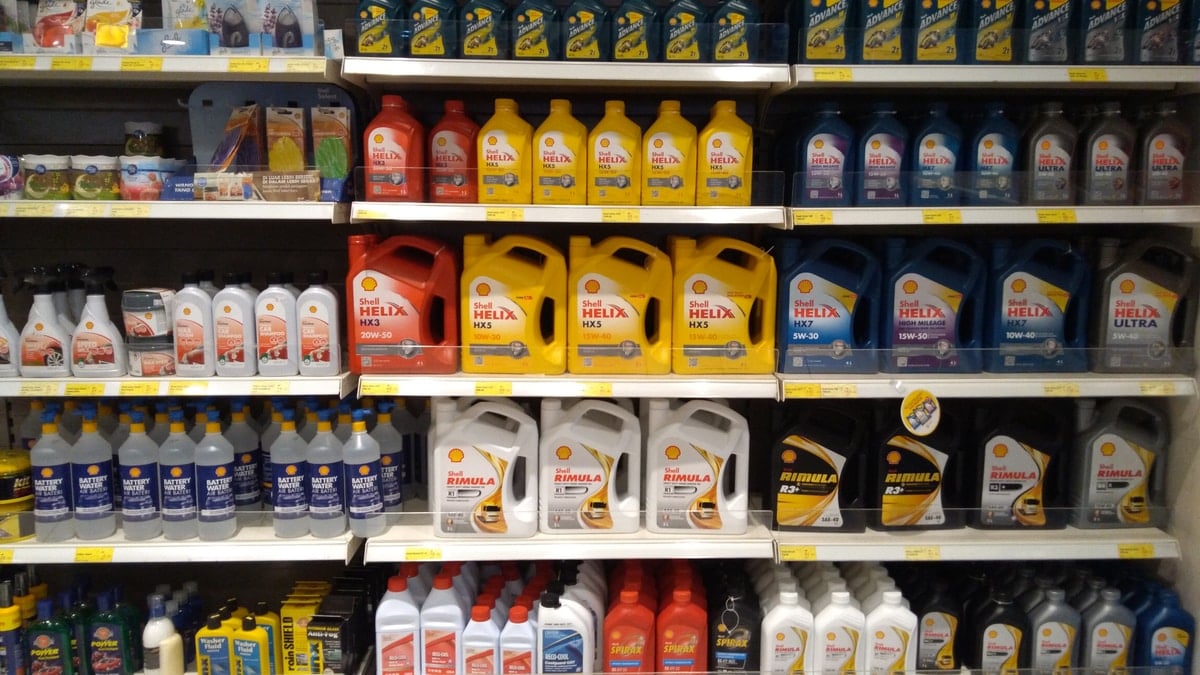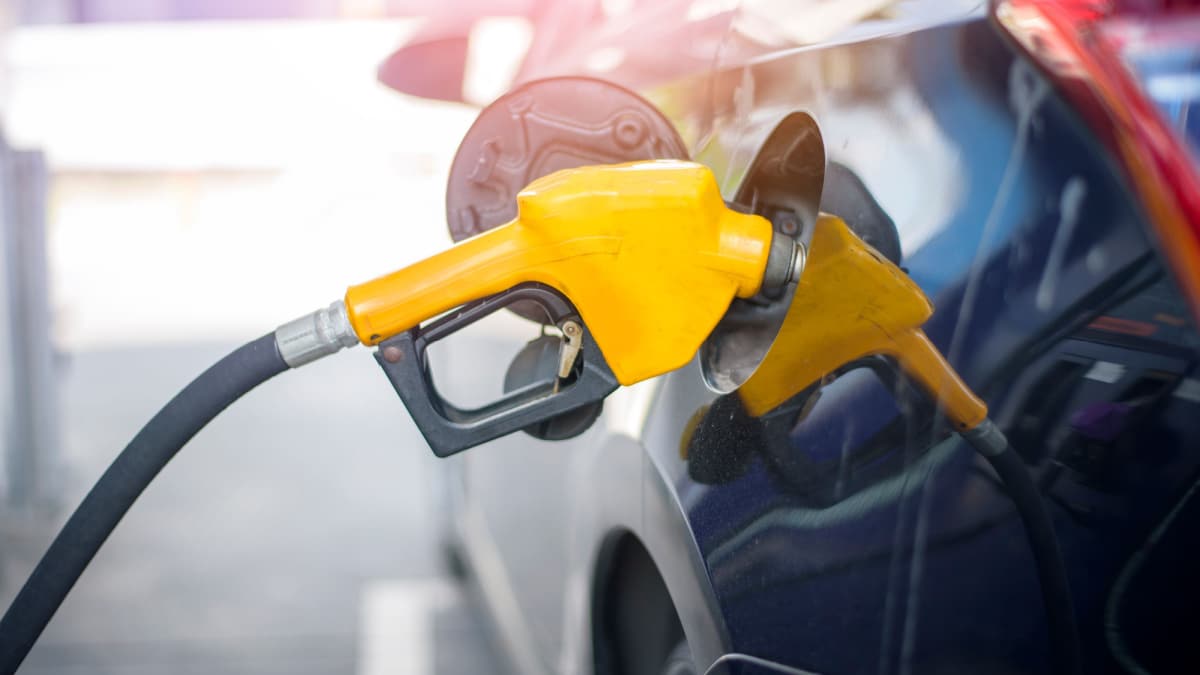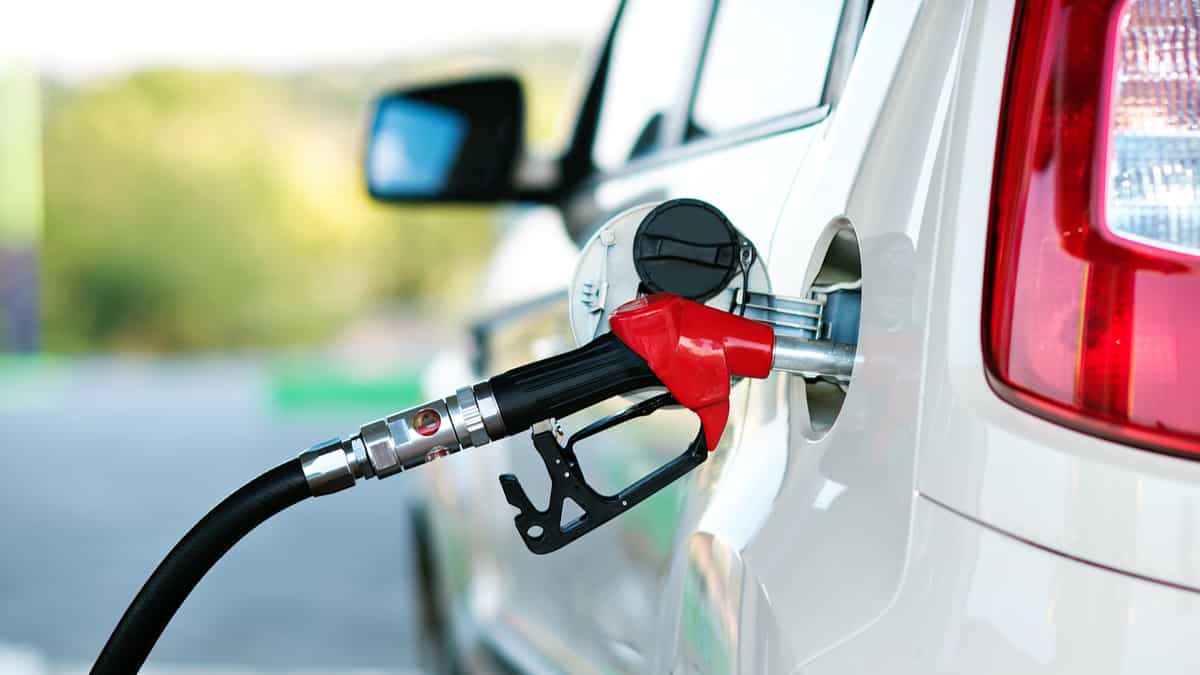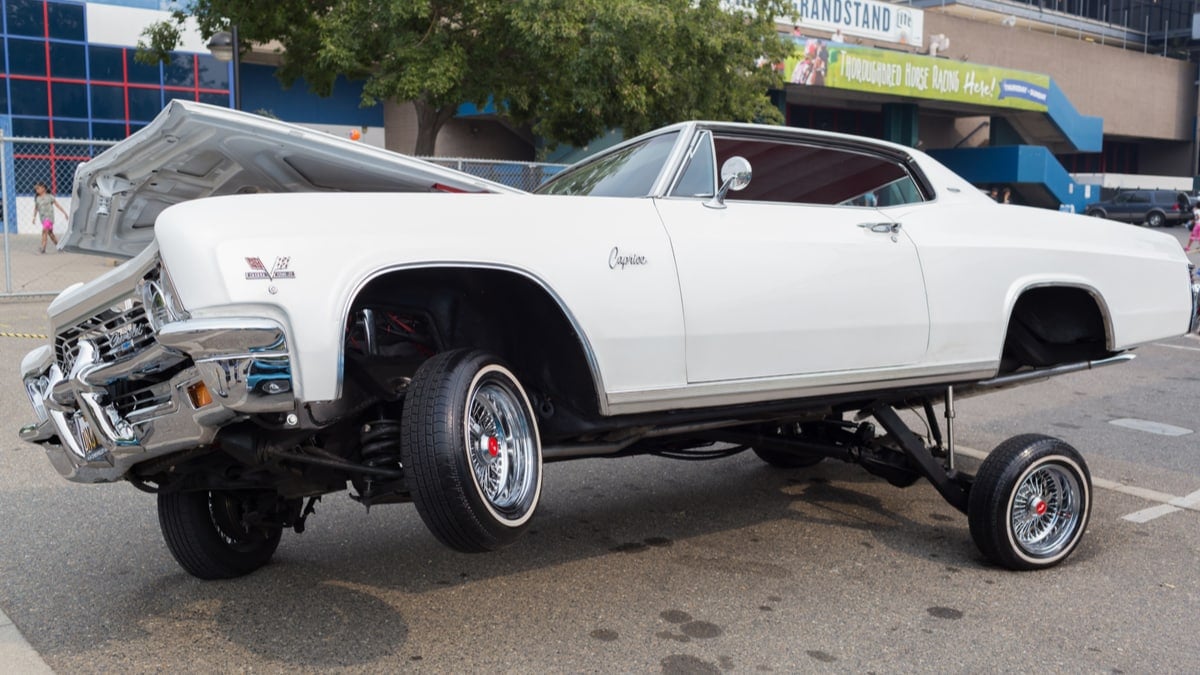Almost every car owner knows that you can destroy the engine by driving with too little engine oil, but what about too much oil?
Sometimes, when topping up the engine oil, it can be difficult to know how much to add to get a perfect level at the max mark on the dipstick, so overfilling is an easy mistake to make. But what should you do if you put too much oil in the engine by mistake, and what can happen to the car engine if you ignore it?
In this article, we’ll look at what happens if you put too much oil in the engine, and what you should do about it. We will also look at some of the most common questions regarding overfilling a car engine with oil.
What Happens If You Put Too Much Oil in Your Car?
If you add too much oil to your car engine, the crankshaft can hit the oil and foam the oil, resulting in engine damage. Fortunately, no action is needed if the oil level is only slightly above. However, if you overfill it 0.2″ or more above the MAX mark, you may need to drain some of the oil.
The engine oil reserve holds some extra oil to compensate for the fluid expansion due to hot conditions. Adding an extra half a quart will not damage your engine. However, anything more than that could be harmful to the engine.
When you add too much oil, the excess oil will go towards the crankshaft, and as the crankshaft rotates at a high-speed, the oil is mixed with the air and ‘aerates’ or becomes foamy. This foamy texture of the oil acts like a bad lubricant, and the oil is not pumped effectively. Over time, the engine will be starved of proper lubrication, and due to the weak oil pump, it can get locked up.
RELATED: How to Check Your Car’s Engine Oil
The Effects Of Too Much Car Oil
Overfilling your car’s engine oil can cause some of the following consequences:
- Foamed Engine Oil – If the oil level in the oil pan gets too high, the crankshaft will rotate in the oil, causing the oil to foam. Foamed motor oil is harmful to your engine because it pushes air bubbles through the engine.
- Combusted Oil – If the oil is overfilled, it will cause higher crankcase pressure, resulting in oil being pushed into the combustion chambers. You may notice blue smoke from the exhaust.
- Spark plug fouling – When the oil gets into the combustion chamber, it will cause a thin layer of oil on the spark plugs. This will cause fouling spark plugs, which will result in a misfiring engine.
- Failing seals and gaskets – Overfilled engine oil will cause higher pressure in the crankcase as we discussed earlier. Higher pressure in the crankcase can lead to failing gaskets or seals, so if you notice more oil leaks than usual, it could be due to overfilled oil.
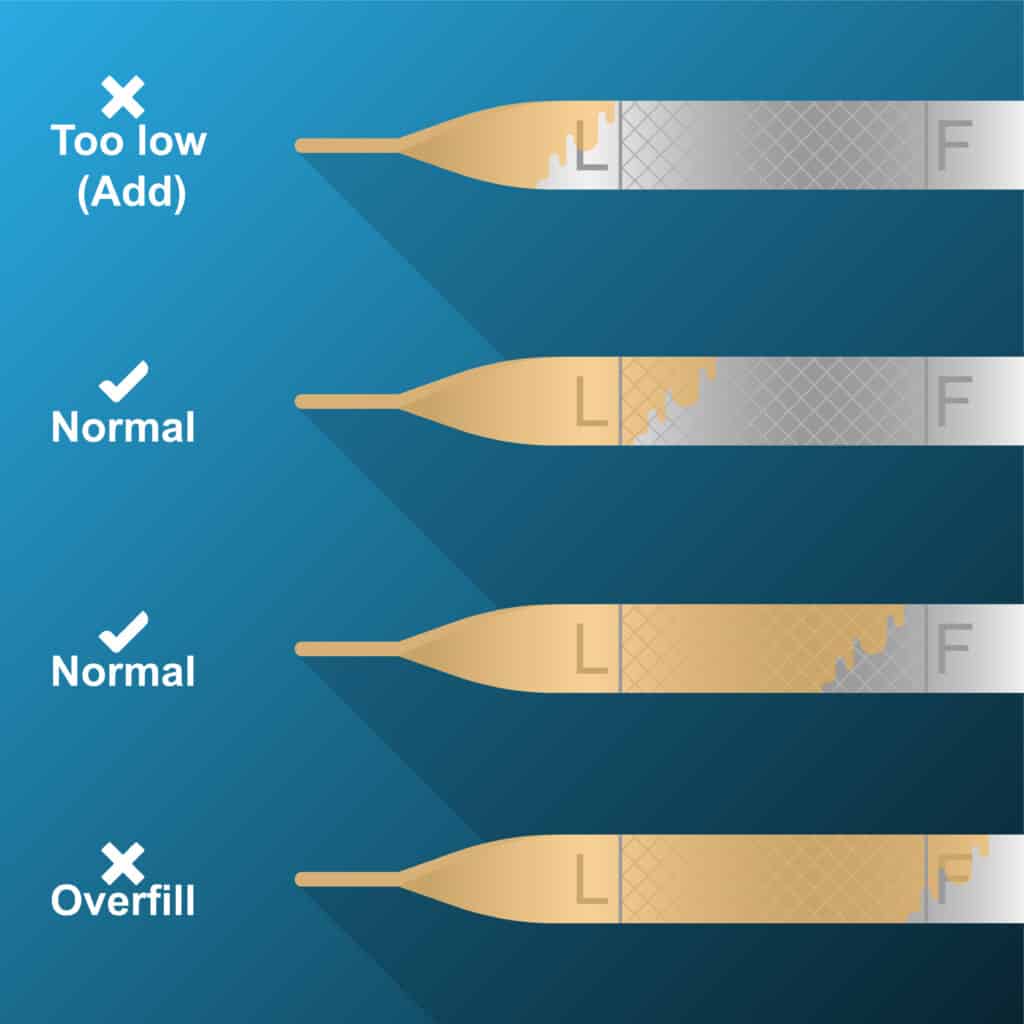
RELATED: Will a Slight Overfill Harm an Automatic Transmission?
What Are The Symptoms of Overfilled Engine Oil?
The most common sign that you have put too much oil in your engine and that the oil level is too high is that your engine starts to leak oil onto the ground, or you see blue smoke from the exhaust. It can also cause a warning light on your dashboard.
Sometimes, you might not know if you or the mechanic have overfilled your engine oil. However, if you notice any of these symptoms, there may be a risk that your oil is overfilled:
- Oil leakage
- A burning smell of engine oil
- Signs of smoke from the engine bay
- Signs of smoke from the exhaust area
- The engine is making too much noise
- Engine Oil Pressure Light on the dashboard
How Much Is Too Much Oil In A Car?
If you want to be on the safe side, anything above the MAX mark on the dipstick is too much. However, if you overfilled the oil by half a quart or less, there is usually nothing to worry about. If the oil level is 0.2″ or more above the max mark on the dipstick or you see foam on it, it’s time to drain some oil though.
How much oil you can add before it reaches critical levels for the engine depends on the engine type. Typically, older engines are less sensitive to higher oil levels, so if you have a modern engine, you’ll want to be careful about overfilling it.
How To Fix Overfilled Oil?
To fix overfilled oil, you need to drain the engine oil. There are two main methods of getting oil out of the engine and these are to either use a suction pump or drain it through the oil plug. Draining it through the oil plug is the easiest way, as it usually doesn’t require any special tools.
The advantage of using a suction pump to get the oil out is that you don’t have to raise the car and crawl under it. But you need a special pump and an air supply for it, and most people don’t want to spend money on a tool they will only use once or twice.
The most common method is to drain it the traditional way through the oil plug. If you are not used to cars this can be a bit messy and sometimes difficult so you may want to have a mechanic do it if you are unsure. Here is how you can drain the oil through the oil plug:
- Raise the car and place jacks under it for safety
- Remove the cover under the engine if present.
- Locate the oil plug (Use a repair manual to locate it if unsure)
- Remove the drain plug and drain it into a bucket with the amount you think you overfilled it with (usually 1 quart).
- Replace the oil plug and tighten it to specification.
- Refit the cover, and lower the vehicle to the ground.
- Start the engine for 3 minutes and turn it off.
- Wait 5 minutes and check the oil level again.
RELATED: Should You Check the Engine Oil Hot Or Cold?
High Oil Level Without Overfilling
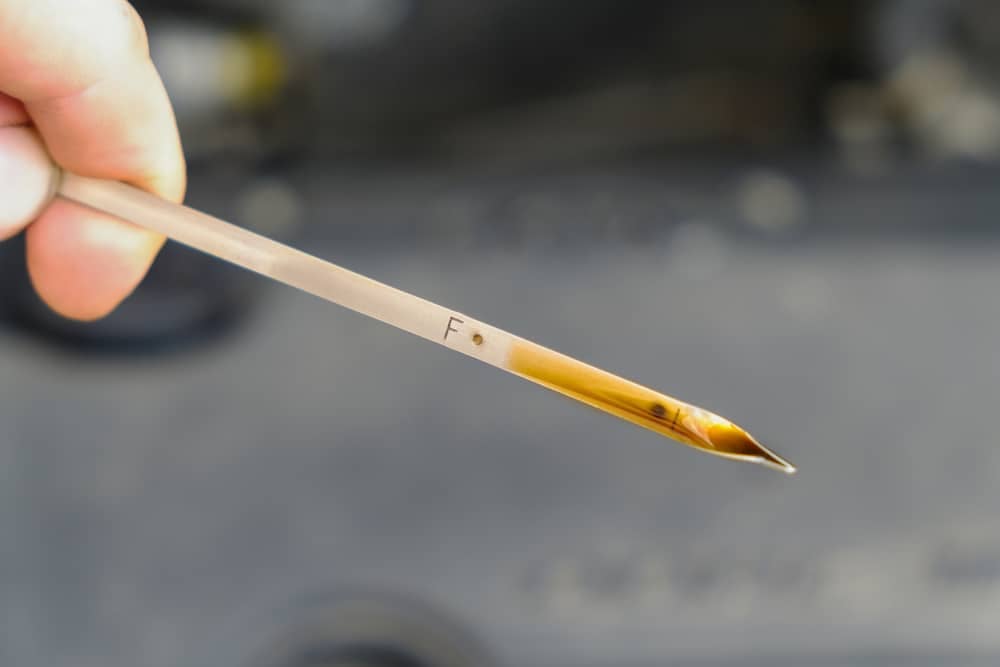
If you noticed that your engine oil level is above the max mark, but you are absolutely sure that neither you nor your mechanic overfilled the oil, there is actually another explanation for this problem.
If you only drive short distances and never allow the engine oil to warm up properly, it will eventually fill it with gasoline that will not evaporate unless it reaches a higher temperature. This will cause the oil level to rise over time and can actually be harmful to the engine as well.
However, if you notice that the oil level is too high because of gasoline in the oil, the best way is still to get an oil change done and try to drive the car for longer trips in the future to prevent this problem.
RELATED: What Color Should Your Car Oil Be? (Dipstick Engine Oil Color Chart)
Can You Drive a Car With Too Much Oil?
No. You shouldn’t drive a car with too much oil. Too much oil can cause it to foam which causes air bubbles to enter the oil pressure channels inside the engine; this is bad for the engine and can cause it to seize if you are unlucky. But if you only overfilled it slightly – 0.2″ or less below the max mark – you don’t need to worry too much in most cases.
How Long Can I Run My Car With Too Much Oil?
In most cases, you should not drive your car at all if you put too much oil in it. However, how long you can drive your car with too much oil depends on how much you overfilled it. If you overfilled it by just 0.2″ or less above the max mark on the dipstick, you don’t need to worry too much. If you overfilled more than that, it’s best to drain the oil as soon as possible.
Will an Extra Quart of Oil Damage My Engine?
Yes. Just one extra quart of oil can damage your engine if you’re unlucky, depending on the engine type. Some engines are more sensitive than others to too much oil. This depends on the distance between the crankshaft and the oil pan. However, it is best not to take the risk even with just an extra quart of oil, as it is quite easy to drain it.
Will 1 Liter of Extra Oil Hurt My Engine?
Yes. Even one extra liter of oil can damage your engine, depending on the engine type. Due to the risk of engine damage with too much oil, it is better not to take the risk and drain the oil instead. If you overfill it by half a liter it is quite safe in most engines, but 1 liter is usually too much.
What Happens If The Oil Level is Above Max?
If the oil level is only slightly above the max, like 0.2″ or less, most likely nothing will happen, depending on the engine. However, if you fill the oil too much above the max mark, the crankshaft will hit the oil level and foam up the engine oil, which can damage the engine.
Can Too Much Oil Cause Engine Noise?
Yes. Too much oil can cause the crankshaft to hit the oil level and foam up the engine oil. Foamed engine oil can cause air bubbles to pass through the oil pump into the hydraulic lifters and other necessary parts of the engine. This can cause the lifters to malfunction and cause a ticking noise from the lifter.
How Much Engine Oil Should I Fill In My Car?
To determine how much oil your engine needs, you need to check it in the owner’s manual. Most engines require 3 to 8 quarts of oil, but this varies by engine size. For example, a 4-cylinder engine may require 3 to 4 quarts of oil, while a larger 6-cylinder engine may need around 6 quarts of oil.
READ MORE: How Much Oil Does My Car Need?
Can Overfilled Engine Oil Blow The Head Gasket?
No. Too much engine oil will not cause a blown head gasket in most cases. However, overfilled engine oil can cause oil leaks which cause smoke to come from the engine bay or the exhaust, which is quite similar to the symptoms of a bad head gasket.
Will Excess Oil Burn Off?
Excess oil will eventually burn off, depending on the engine type, as some engines burn more oil than others. However, overfilling engine oil can damage the engine, and if you’re unlucky, it can damage the engine before the excess oil burns off. Therefore, it is better to drain the oil instead of waiting for it to burn off.
If you put too much oil in your engine, it can result in foamed engine oil which can lead to serious engine damage. You need to drain it in most car models if it’s 0.2″ above the MAX sign on the dipstick, but it’s better to be safe than sorry.
Overfilling your engine oil may seem like a small mistake, but in reality it can have serious consequences for your engine. Therefore, while some engines can handle the overfilled engine oil well, it’s really not worth the risk.
Driving with too much oil can cause complete engine failure. You may end up needing a total engine replacement, which is definitely not cheap. If you’ve overfilled the oil, it’s cheap insurance to drain some oil, even if it’s not a fun job. You can either drain the oil with a suction pump or drain it through the oil plug.
I hope this article helped answer the questions you had about overfilling engine oil, and that you now have the knowledge of what to do if you overfill the oil in the future.
References
Learn more:
- How Long Does an Oil Change Take?
- How to Change the Oil in Your Car (5 Easy Steps)
- How Much Does an Oil Change Cost?
Categories: Engine Oil, Maintenance
